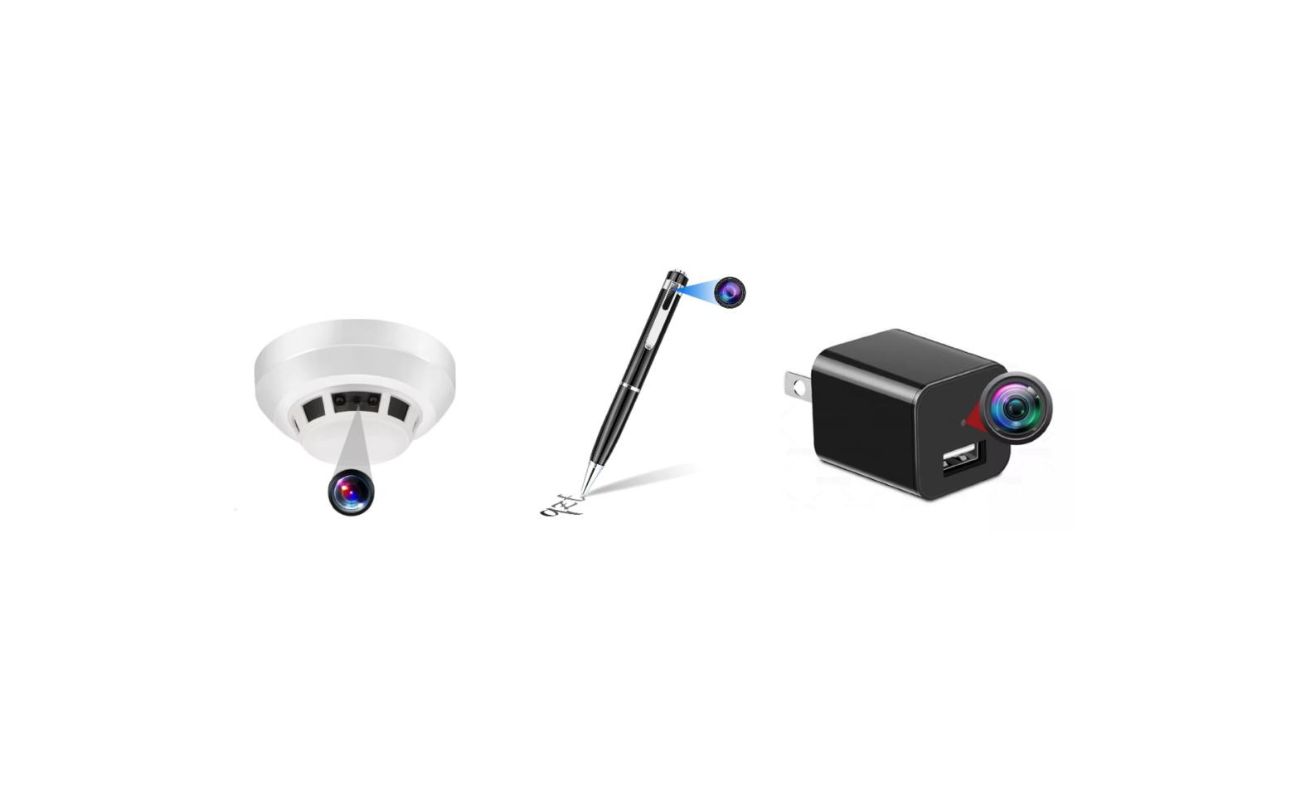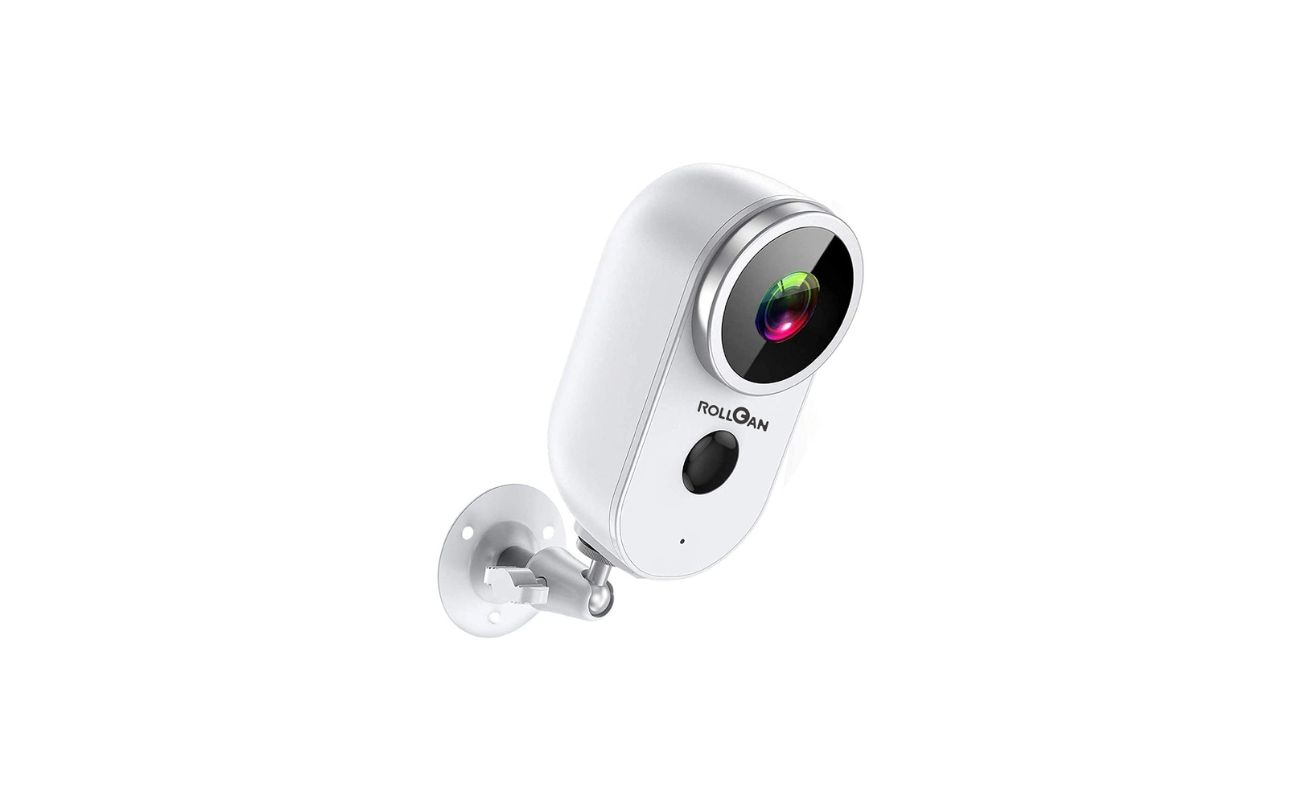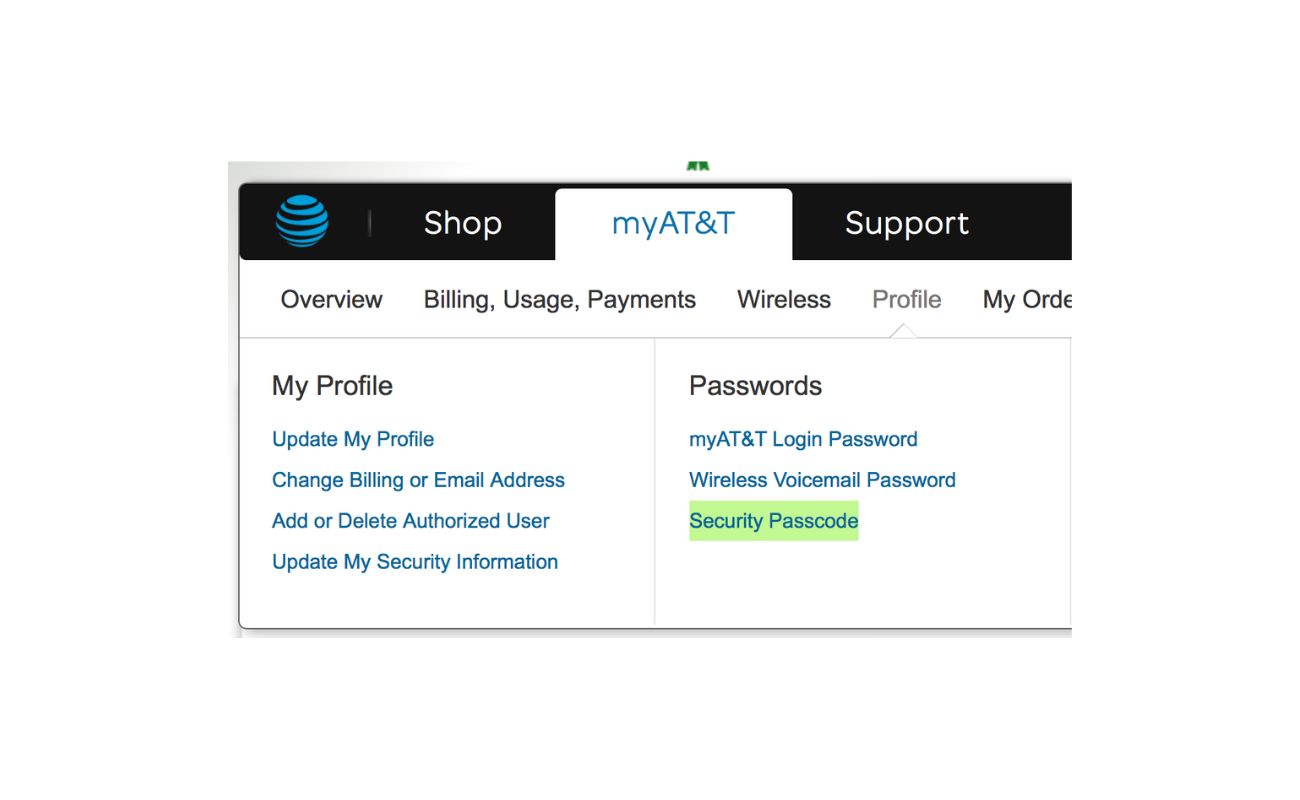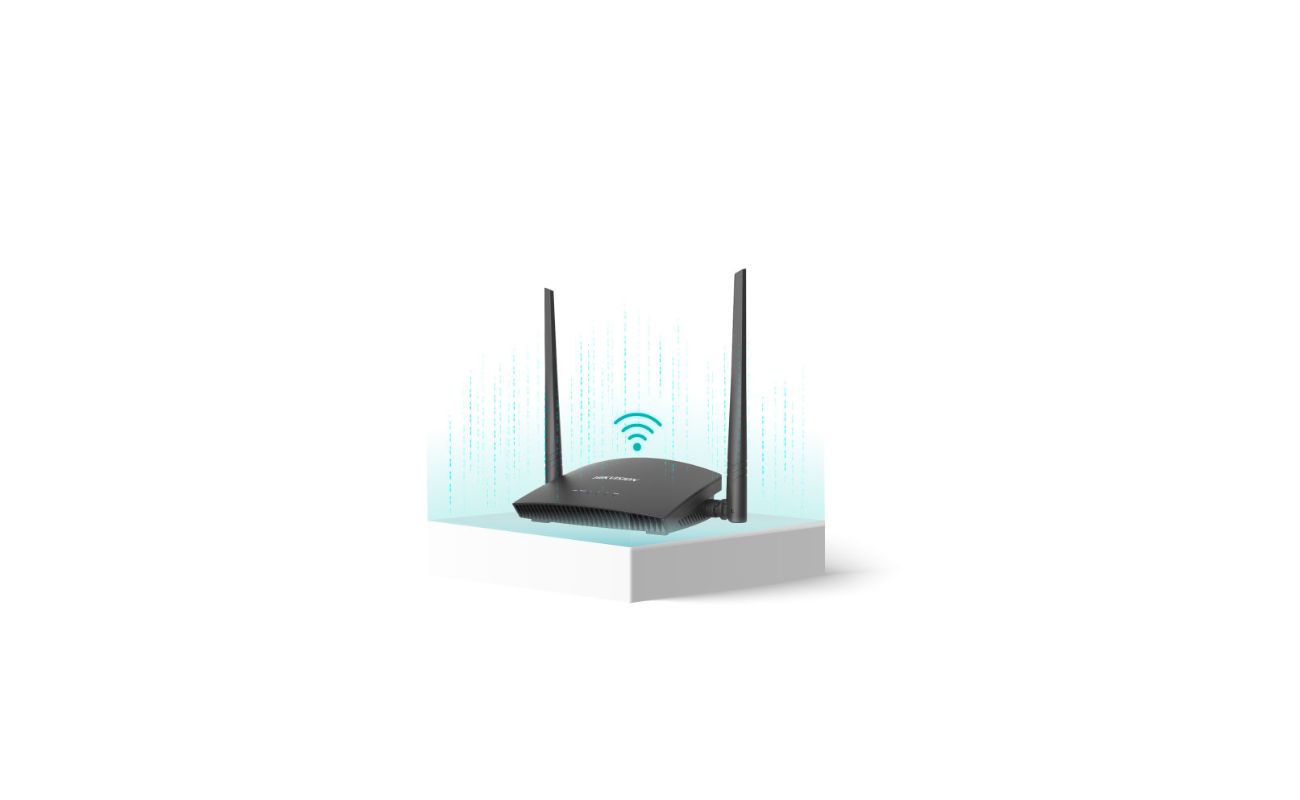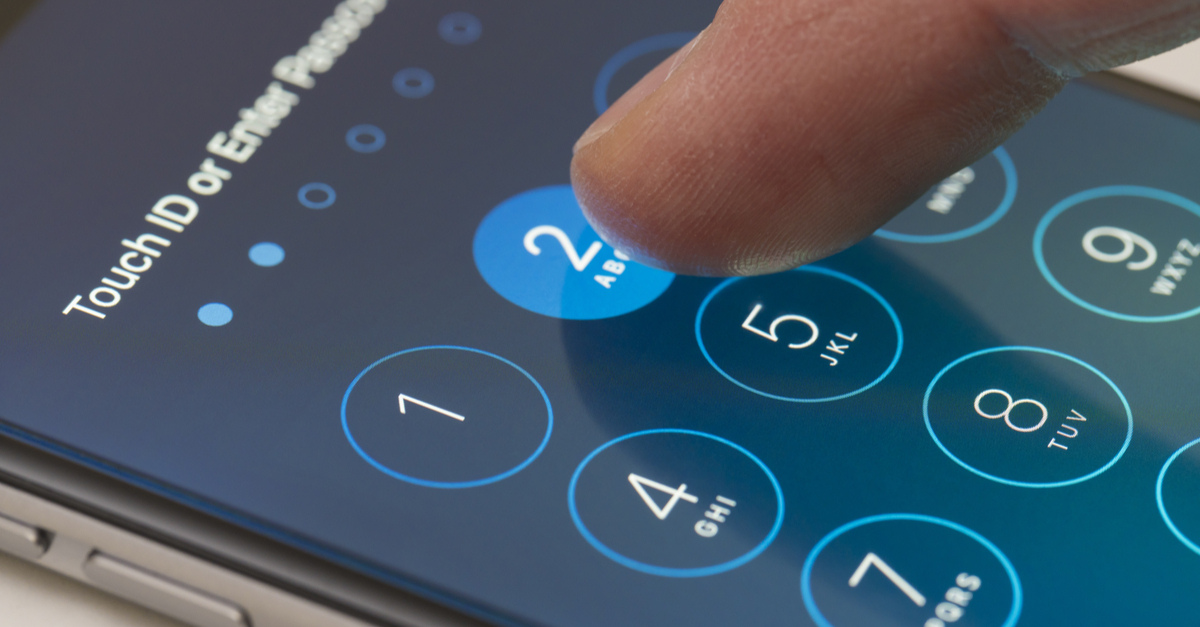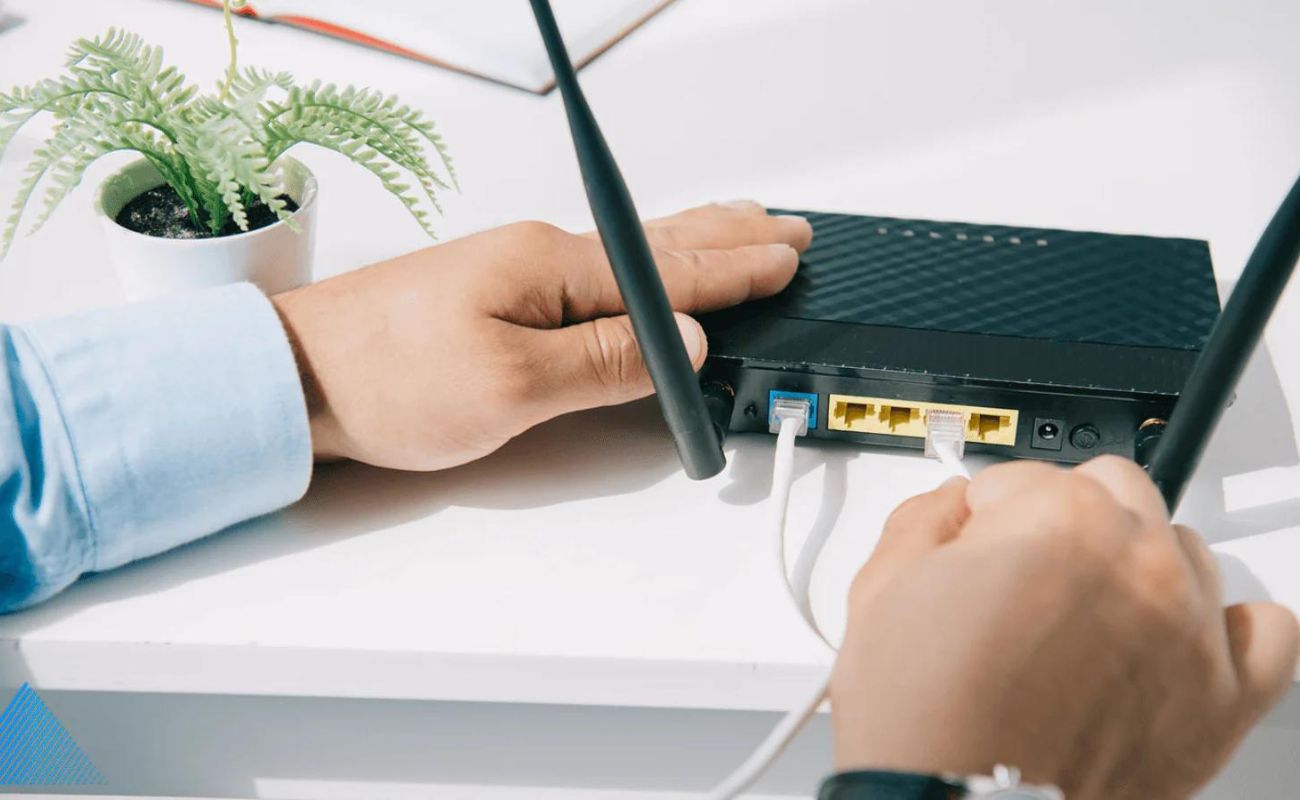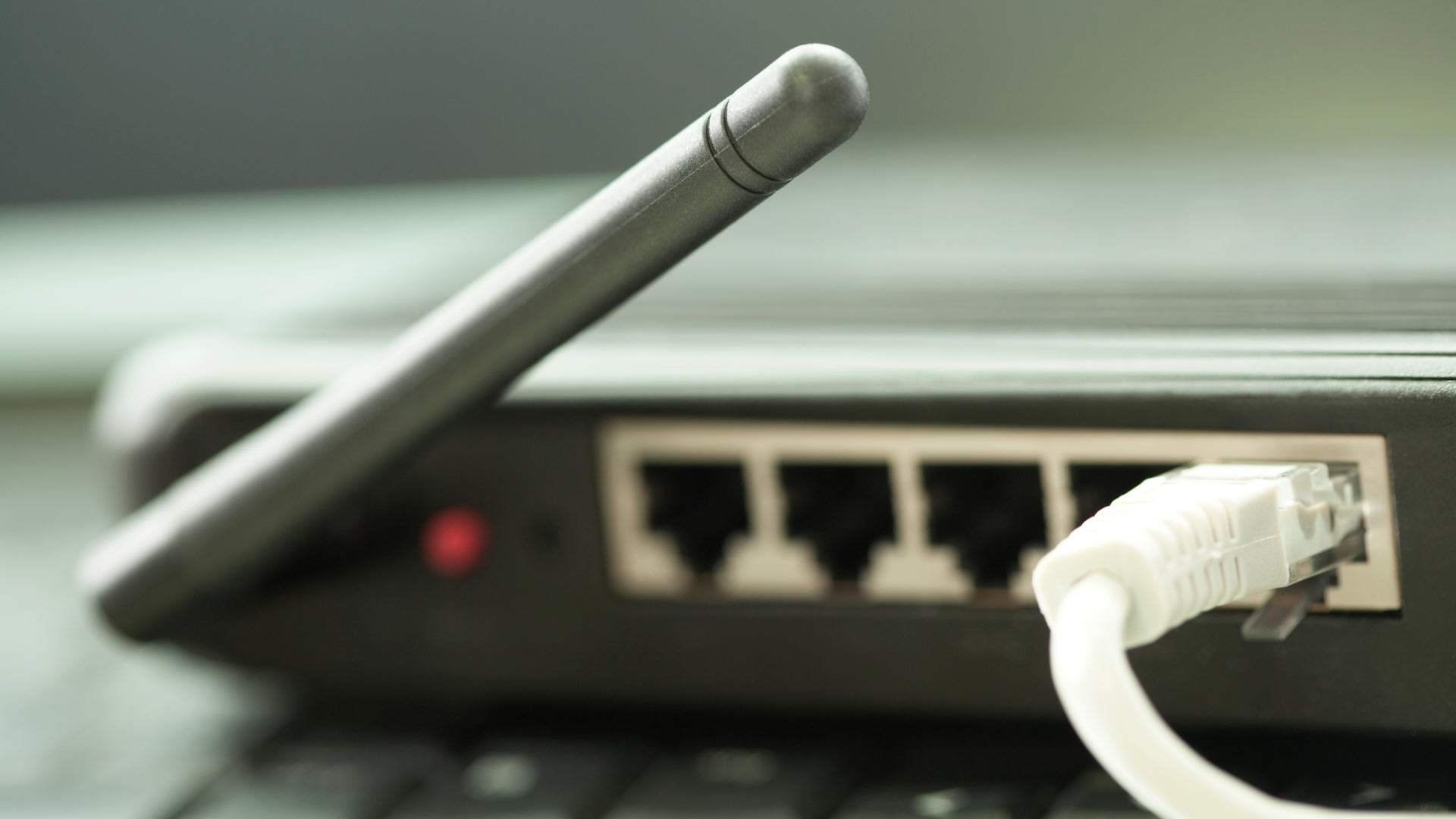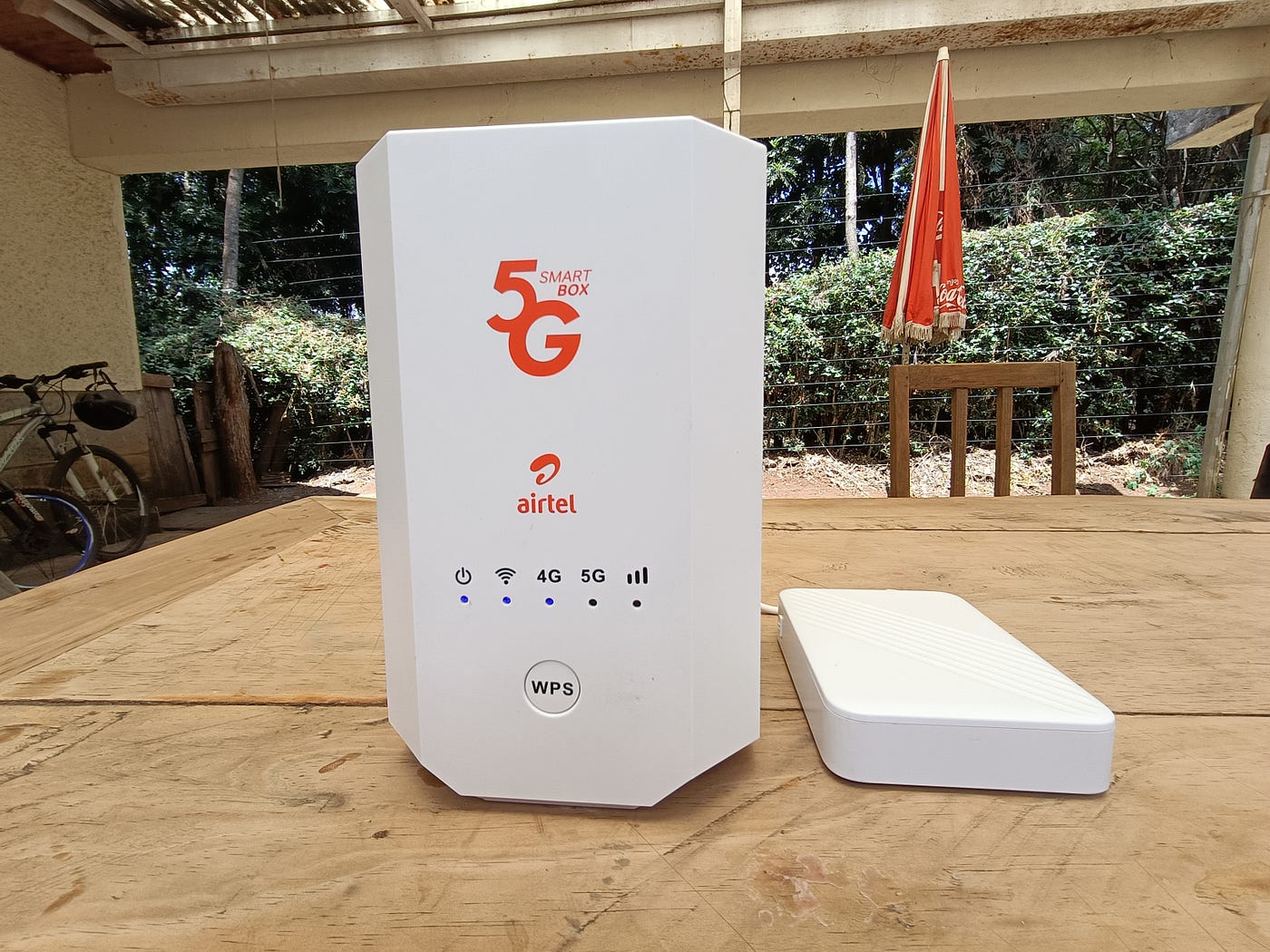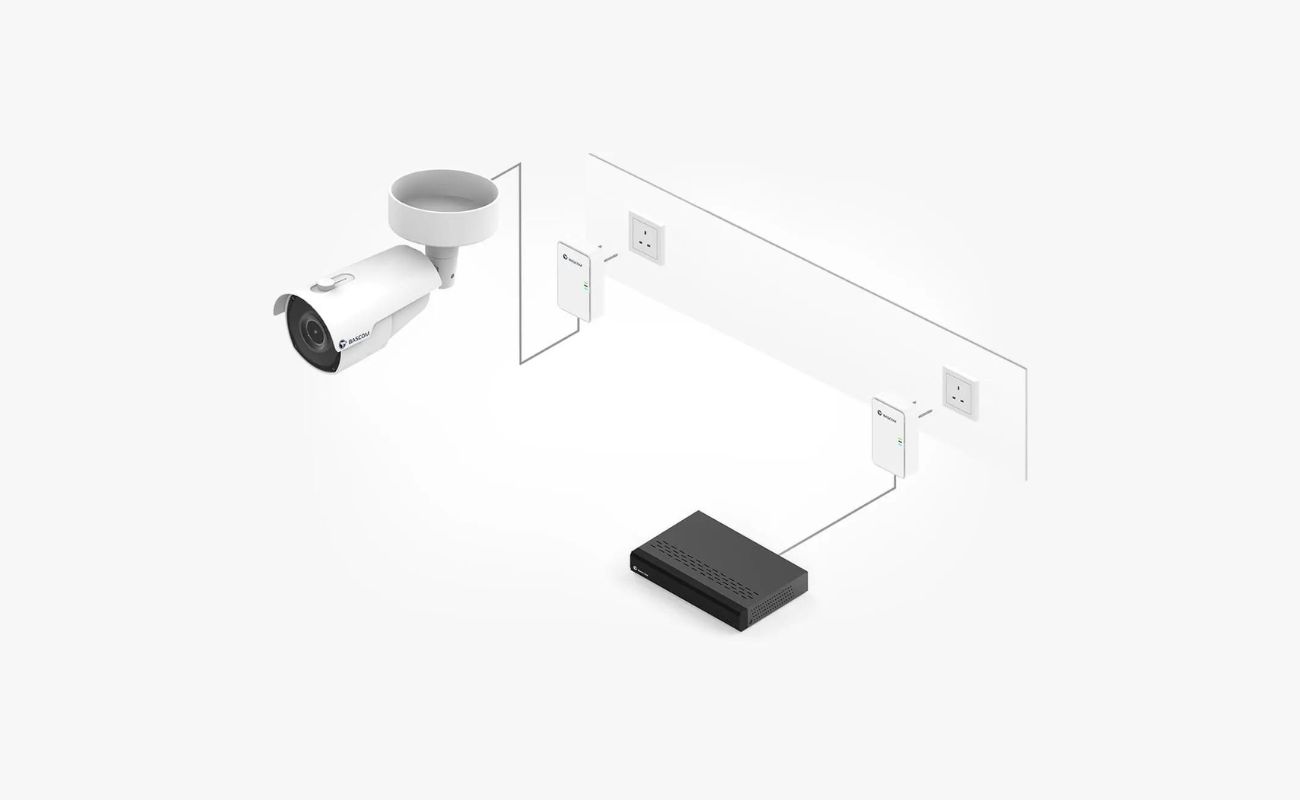Home>Home Security and Surveillance>Where To Find Wireless Security Types On A Fios Router G1100
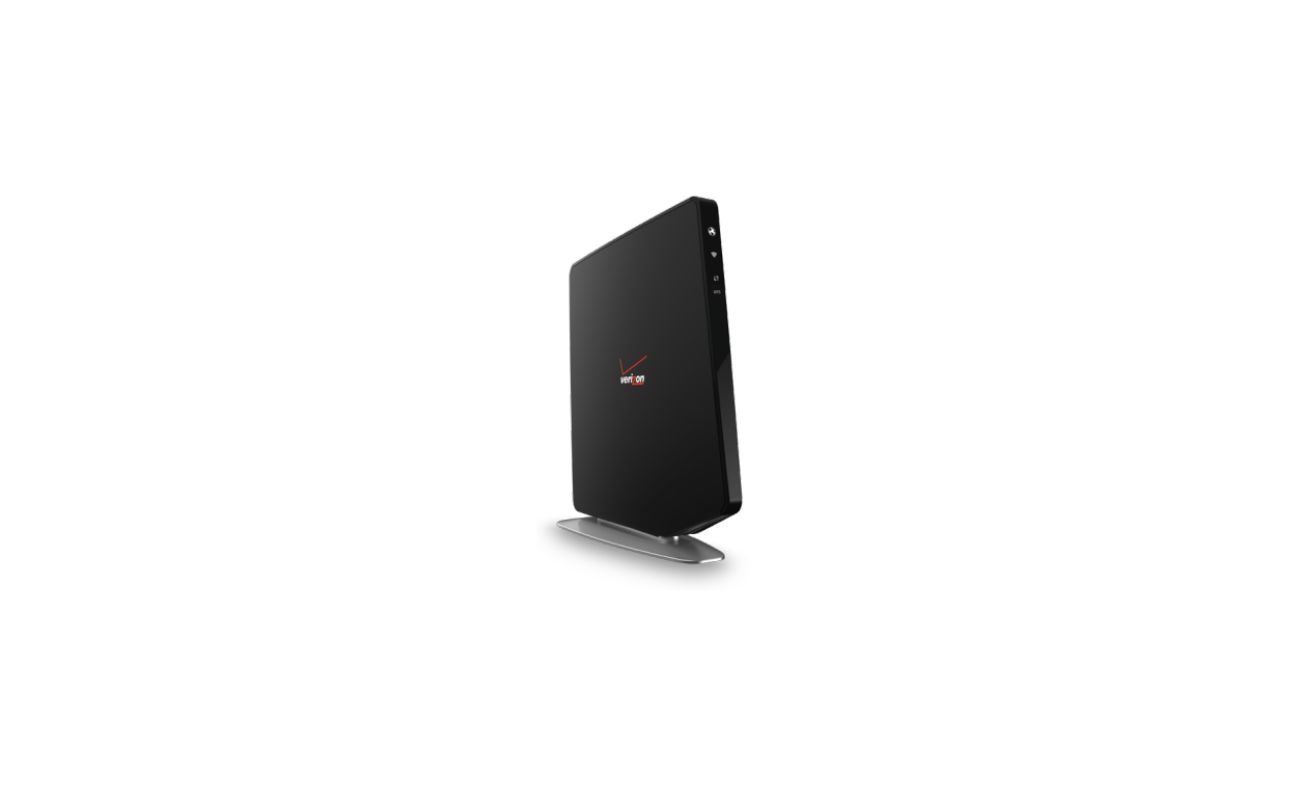

Home Security and Surveillance
Where To Find Wireless Security Types On A Fios Router G1100
Modified: March 6, 2024
Looking to enhance your home security and surveillance? Discover the various wireless security types available on a Fios Router G1100.
(Many of the links in this article redirect to a specific reviewed product. Your purchase of these products through affiliate links helps to generate commission for Storables.com, at no extra cost. Learn more)
Introduction
When it comes to home security and surveillance, having a reliable and robust wireless network is essential. With the increasing popularity of Fios Router G1100, it’s crucial to understand the different wireless security types offered by this device. By securing your Fios router, you can safeguard your network and protect it from unauthorized access.
In this article, we will explore the various wireless security options available on the Fios Router G1100 and guide you on how to access and configure these settings. Whether you’re a tech-savvy individual or a beginner, this article will provide you with all the information you need to optimize your home network security.
Let’s delve into the world of wireless security and discover how you can protect your Fios Router G1100.
Key Takeaways:
- Protect your Fios Router G1100 with advanced wireless security options like WPA3, WPA/WPA2, and MAC address filtering. Safeguard your network from unauthorized access and keep your data secure.
- Easily configure wireless security settings on your Fios Router G1100 to ensure a reliable and secure internet connection. Choose from WEP, WPA/WPA2, WPA3, MAC address filtering, and guest network security for enhanced protection.
Understanding Fios Router G1100
The Fios Router G1100 is a high-performance router designed to provide seamless wireless connectivity and advanced networking features. It is commonly used in homes and small businesses to enable internet access and network communication.
This router supports both wired and wireless connections, allowing you to connect devices such as computers, smartphones, and smart home gadgets to your network. It offers impressive speed and coverage, ensuring a stable and reliable internet connection throughout your home.
The Fios Router G1100 is equipped with advanced security features to protect your network from unauthorized access and keep your data secure. It provides multiple wireless security types that you can choose from, depending on your needs and preferences.
Now that we have a basic understanding of the Fios Router G1100, let’s explore the different wireless security options it offers.
Wireless Security Types Supported by Fios Router G1100
The Fios Router G1100 supports several wireless security types to ensure that your network is protected from unauthorized access and potential security threats. Let’s take a closer look at the different security types available:
- WEP Security: Wired Equivalent Privacy (WEP) is an older and less secure security protocol. While it is not recommended for use due to its vulnerabilities, the Fios Router G1100 still offers this option for compatibility with older devices.
- WPA/WPA2 Security: Wi-Fi Protected Access (WPA) and WPA2 are more secure wireless security protocols. They use stronger encryption algorithms to protect your network. This is the recommended security type for most users.
- WPA3 Security: The Fios Router G1100 also supports WPA3, the latest wireless security protocol. WPA3 provides enhanced security features, such as stronger cryptographic algorithms and protection against offline dictionary attacks. It offers the highest level of security for your network.
- MAC Address Filtering: In addition to encryption, the Fios Router G1100 allows you to enable MAC address filtering. You can create a list of approved MAC addresses, and only devices with these addresses will be allowed to connect to your network.
- Guest Network Security: If you want to provide internet access to guests without compromising the security of your primary network, the Fios Router G1100 allows you to set up a separate guest network. You can apply different security settings to the guest network to ensure that your main network remains secure.
Having a variety of wireless security options available on the Fios Router G1100 enables you to choose the one that best fits your needs and provides optimal protection for your network. Now, let’s move on to how you can access and configure these security settings on your Fios Router G1100.
How to Access Wireless Security Settings on Fios Router G1100
Configuring the wireless security settings on your Fios Router G1100 is a straightforward process. Follow these steps to access the wireless security settings:
- Connect your computer or mobile device to the Fios Router G1100 using a wired or wireless connection.
- Open a web browser and enter the router’s IP address into the address bar. The default IP address for the Fios Router G1100 is often
192.168.1.1. Press Enter. - You will be directed to the router’s admin login page. Enter the administrator username and password. By default, the username is often
admin, and the password is eitherpasswordorpassword1. If you’ve changed the login credentials before, use the updated username and password. - Once logged in, you will see the router’s administration dashboard. Look for the section related to wireless settings or wireless security.
- Click on the wireless security option to access the security settings.
- Here, you will find the various wireless security types supported by the Fios Router G1100, such as WEP, WPA/WPA2, and WPA3. Choose the security type you want to enable and configure the necessary settings.
- Save your changes once you have configured the desired security settings.
- Restart your router to apply the new security settings. Your wireless network will now be protected with the chosen security type.
It is important to note that some Fios Router G1100 models may have slightly different admin panel interfaces. If you encounter any issues or difficulties while accessing or configuring the security settings, refer to the router’s user manual or contact your internet service provider for assistance.
Now that you know how to access and configure the wireless security settings on your Fios Router G1100, let’s explore the different security types in more detail.
WEP Security on Fios Router G1100
Wired Equivalent Privacy (WEP) is an older security protocol that was commonly used to secure wireless networks. However, WEP is considered to be highly vulnerable to security breaches and is no longer recommended for use.
Despite its weaknesses, the Fios Router G1100 still supports WEP for compatibility purposes. If you have older devices that can only connect using WEP, you can enable this security type, but it is important to be aware of its limitations.
Here are some key points to know about WEP security on the Fios Router G1100:
- WEP uses a static encryption key that needs to be manually entered into both the router and any devices attempting to connect to the network.
- WEP utilizes either a 64-bit or 128-bit encryption key. The longer the key, the more secure it is, but even the 128-bit key is susceptible to cracking.
- WEP encryption can be easily compromised through various methods, such as brute force attacks or capturing enough data packets to analyze and crack the encryption.
- Once an attacker gains access to your WEP-secured network, they can intercept and manipulate your data traffic, posing a serious threat to your privacy.
Given the significant vulnerabilities associated with WEP security, it is strongly recommended to avoid using it whenever possible. If your Fios Router G1100 supports WPA/WPA2 or WPA3, it is highly advisable to use one of these more secure options.
To enhance your network security, regularly update your Fios Router G1100’s firmware to ensure you have the latest security patches and features available. This can help protect against potential vulnerabilities and keep your network safe.
Now let’s move on to exploring the more secure options available on the Fios Router G1100, such as WPA/WPA2 and WPA3.
WPA/WPA2 Security on Fios Router G1100
Wi-Fi Protected Access (WPA) and WPA2 are widely regarded as more secure wireless security protocols compared to WEP. The Fios Router G1100 offers support for both WPA and WPA2, providing you with stronger encryption and improved protection for your network.
Here are some key features and benefits of using WPA/WPA2 security on your Fios Router G1100:
- Dynamic Encryption: WPA/WPA2 uses dynamic encryption keys, which are automatically generated and unique for each session. This makes it significantly more challenging for attackers to crack the encryption.
- Strong Encryption Algorithms: WPA/WPA2 utilizes AES (Advanced Encryption Standard) encryption, which is highly secure and resistant to brute force attacks.
- Legacy Support: WPA/WPA2 has backward compatibility, allowing devices that only support WPA to connect to your network without compromising security.
- Secure Authentication: WPA/WPA2 incorporates strong authentication methods such as Pre-Shared Key (PSK) or Wi-Fi Protected Setup (WPS) to ensure that only authorized devices can access your network.
- Enhanced Key Management: WPA2 introduces improved key management processes, making it more robust and secure.
When setting up WPA/WPA2 security on your Fios Router G1100, make sure to follow these best practices:
- Choose a strong and unique passphrase for your network. A combination of uppercase and lowercase letters, numbers, and special characters is recommended.
- Regularly change your passphrase to minimize the risk of unauthorized access.
- Disable WPS if you’re not actively using it, as it can pose a potential security vulnerability.
- Periodically review your list of connected devices to ensure there are no unidentified or unauthorized devices accessing your network.
By implementing WPA/WPA2 security on your Fios Router G1100, you can enhance the protection of your wireless network and keep your data secure from potential threats.
Next, let’s explore the latest wireless security protocol supported by the Fios Router G1100: WPA3.
You can find the wireless security types on a Fios Router G1100 by logging into the router’s web interface and navigating to the wireless settings. Look for the security options such as WPA2, WPA, or WEP, and choose the one that best fits your security needs.
WPA3 Security on Fios Router G1100
Wi-Fi Protected Access 3 (WPA3) is the latest and most secure wireless security protocol available on the Fios Router G1100. It introduces several enhancements over its predecessors, WPA and WPA2, to further protect your network from unauthorized access and improve the overall security of your wireless connections.
Here are some key features and benefits of using WPA3 security on your Fios Router G1100:
- Enhanced Encryption: WPA3 incorporates stronger encryption algorithms, such as Simultaneous Authentication of Equals (SAE), making it highly resistant to various cryptographic attacks.
- Protection Against Offline Attacks: WPA3 uses Opportunistic Wireless Encryption (OWE), which protects against offline dictionary attacks by encrypting data flows between the router and the client device. This is particularly useful when connecting to public Wi-Fi networks.
- Individualized Data Encryption: WPA3 provides individualized data encryption for each device connected to the network, ensuring that even if one device is compromised, the security of other devices remains intact.
- Secure Public Wi-Fi Connections: WPA3 offers improved security for connecting to public Wi-Fi networks, reducing the risk of data interception and unauthorized access.
To enable WPA3 security on your Fios Router G1100, follow these steps:
- Access your router’s administration dashboard using the web browser and the router’s IP address.
- Navigate to the wireless security settings, and look for the WPA3 option.
- Select the WPA3 security type.
- Enter a strong and unique passphrase for your network.
- Save the changes and restart your router to apply the new security settings.
It’s important to note that not all client devices may support WPA3. In such cases, the Fios Router G1100 will automatically fall back to WPA2 or WPA/WPA2 mixed mode to ensure compatibility.
By utilizing the advanced security features of WPA3 on your Fios Router G1100, you can take advantage of the latest advancements in wireless security and enhance the protection of your network and connected devices.
Next, let’s explore another security feature offered by the Fios Router G1100: MAC address filtering.
MAC Address Filtering on Fios Router G1100
MAC address filtering is an additional security feature available on the Fios Router G1100 that allows you to control which devices can connect to your network. MAC, which stands for Media Access Control, is a unique identifier assigned to each network interface card (NIC) of a device.
Enabling MAC address filtering on your Fios Router G1100 provides an extra layer of security by only allowing devices with specified MAC addresses to access your network. Here are the key points to understand about MAC address filtering:
- Device Identification: Every device connected to a network has a unique MAC address. By adding MAC addresses to a whitelist, you can precisely identify and control which devices are granted access to your network.
- Access Control: When MAC address filtering is enabled on your Fios Router G1100, only devices with MAC addresses listed in the allowed list can connect to your network. Any devices with unrecognized MAC addresses will be denied access.
- Exceptions: Some routers allow MAC address filtering to be configured with both a whitelist and a blacklist. In this case, devices with blacklisted MAC addresses will be denied access, while all other devices are allowed.
- Configuring MAC Address Filtering: Accessing and configuring MAC address filtering usually involves logging into the administration dashboard of your Fios Router G1100 and navigating to the wireless security settings. You will find options to add or remove MAC addresses from the allowed or blocked lists.
- Limitations: While MAC address filtering can provide an additional layer of security, it is not foolproof. MAC addresses can be spoofed or cloned, allowing unauthorized devices to bypass the filtering. It is recommended to use MAC address filtering in combination with other security measures for enhanced protection.
By enabling MAC address filtering and carefully managing the list of allowed MAC addresses on your Fios Router G1100, you can have more control over which devices can connect to your network, increasing the security of your home or small business network.
Next, let’s explore another security feature offered by the Fios Router G1100: Guest Network Security.
Guest Network Security on Fios Router G1100
The Fios Router G1100 provides a convenient feature known as the guest network, which allows you to create a separate network for your guests to connect to without compromising the security of your main network. Implementing guest network security on your Fios Router G1100 ensures that your private network remains protected while providing internet access to visitors.
Here are the key features and benefits of using the guest network security feature:
- Isolated Network: The guest network is completely separate from your main network, which means devices connected to the guest network cannot communicate with devices on your primary network.
- Easy Setup: Setting up the guest network is simple. Through the Fios Router G1100’s administration dashboard, you can enable the guest network and customize its settings to meet your preferences.
- Enhanced Security: While the guest network is meant to provide internet access for your visitors, it is important to maintain security. You can enable security protocols such as WPA2 or WPA3 on the guest network to protect it from unauthorized access.
- Time and Bandwidth Control: Some Fios Router G1100 models offer the ability to set time limits for guest network access or allocate specific bandwidth for guests. This allows you to manage and control the usage of the guest network.
- Easy Guest Access: You can provide your guests with a separate network name (SSID) and password specifically for the guest network, making it easy for them to connect without accessing your primary network.
Enabling guest network security on your Fios Router G1100 is a simple process. You can access the router’s administration dashboard, navigate to the guest network settings, and configure the desired security options. Remember to choose a strong password for the guest network to prevent unauthorized access.
By utilizing the guest network security feature, you can ensure that your guests have a convenient and secure way to connect to the internet while keeping your main network protected from potential threats.
In the next section, we will provide additional tips and best practices for maximizing wireless security on your Fios Router G1100.
Additional Tips for Wireless Security on Fios Router G1100
While the Fios Router G1100 offers robust security features, there are additional steps you can take to maximize the wireless security of your network. Consider these tips to further enhance the protection of your Fios Router G1100:
- Regular Firmware Updates: Check for firmware updates regularly and install them to keep your router’s security up to date. Firmware updates often include important security patches and bug fixes.
- Change Default Admin Credentials: Change the default username and password for accessing the router’s administration dashboard. Use strong, unique credentials to prevent unauthorized access.
- Disable Remote Management: Disable remote management access to your Fios Router G1100 unless you specifically require it. This reduces the risk of remote attacks on your router’s settings.
- Use Strong Network Passwords: Create a strong and unique password for your wireless network. Include a combination of uppercase and lowercase letters, numbers, and special characters.
- Enable Network Encryption: Ensure that your Fios Router G1100 is using an encryption method such as WPA2 or WPA3 to protect your network’s data from being intercepted.
- Disable Wi-Fi Protected Setup (WPS): Unless you actively use WPS, it is recommended to disable it. WPS can potentially be exploited by attackers to gain unauthorized access to your network.
- Regularly Check Connected Devices: Periodically review the list of connected devices on your Fios Router G1100 to ensure that only recognized devices are connected. Remove any unfamiliar or unauthorized devices from the network.
- Enable Firewall and Intrusion Detection: Activate the built-in firewall and intrusion detection features on your Fios Router G1100 to add an extra layer of protection against network threats.
- Consider Network Segmentation: If you have specific devices or systems with higher security requirements, consider creating a separate network segment to isolate them from the main network.
By implementing these tips, you can significantly enhance the wireless security of your Fios Router G1100. Remember, maintaining strong security practices is essential to safeguard your network from potential threats.
Now that you have a comprehensive understanding of wireless security on the Fios Router G1100 and some additional tips, you can confidently optimize the security of your home or small business network. Remember to regularly review and update your security measures to stay ahead of evolving threats.
If you have any questions or require further assistance, consult the user manual or reach out to your internet service provider for support.
Stay safe and enjoy a secure and reliable wireless network with your Fios Router G1100!
Conclusion
Securing your home or small business network is of utmost importance, and the Fios Router G1100 offers a range of wireless security options to protect your network and ensure the privacy of your data. By understanding and utilizing these security features, you can enhance the overall security of your wireless network.
In this article, we explored the various wireless security types supported by the Fios Router G1100, including WEP, WPA/WPA2, and WPA3. We discussed how to access and configure the wireless security settings on your router and highlighted the benefits of each security type.
We also explored additional security features such as MAC address filtering and the guest network, which provide further control and protection for your network while accommodating guests and limiting unauthorized access.
Moreover, we provided additional tips to maximize wireless security, including regular firmware updates, changing default admin credentials, enabling network encryption, disabling unnecessary features like WPS, monitoring connected devices, and considering network segmentation.
By implementing these measures and staying proactive in maintaining the security of your Fios Router G1100, you can minimize the risk of unauthorized access, data breaches, and other security threats.
Remember, wireless security is an ongoing effort, and it is essential to stay informed about the latest security best practices and updates. Regularly review and update your security settings, and be mindful of potential vulnerabilities.
With a well-protected Fios Router G1100 and a secure wireless network, you can enjoy the benefits of a reliable and secure internet connection while providing a protected environment for your devices and data.
Take the time to optimize your wireless security settings on your Fios Router G1100 today and enjoy peace of mind knowing that your network is safeguarded against potential threats.
Stay safe, protect your network, and enjoy a seamless and secure online experience!
Frequently Asked Questions about Where To Find Wireless Security Types On A Fios Router G1100
Was this page helpful?
At Storables.com, we guarantee accurate and reliable information. Our content, validated by Expert Board Contributors, is crafted following stringent Editorial Policies. We're committed to providing you with well-researched, expert-backed insights for all your informational needs.
